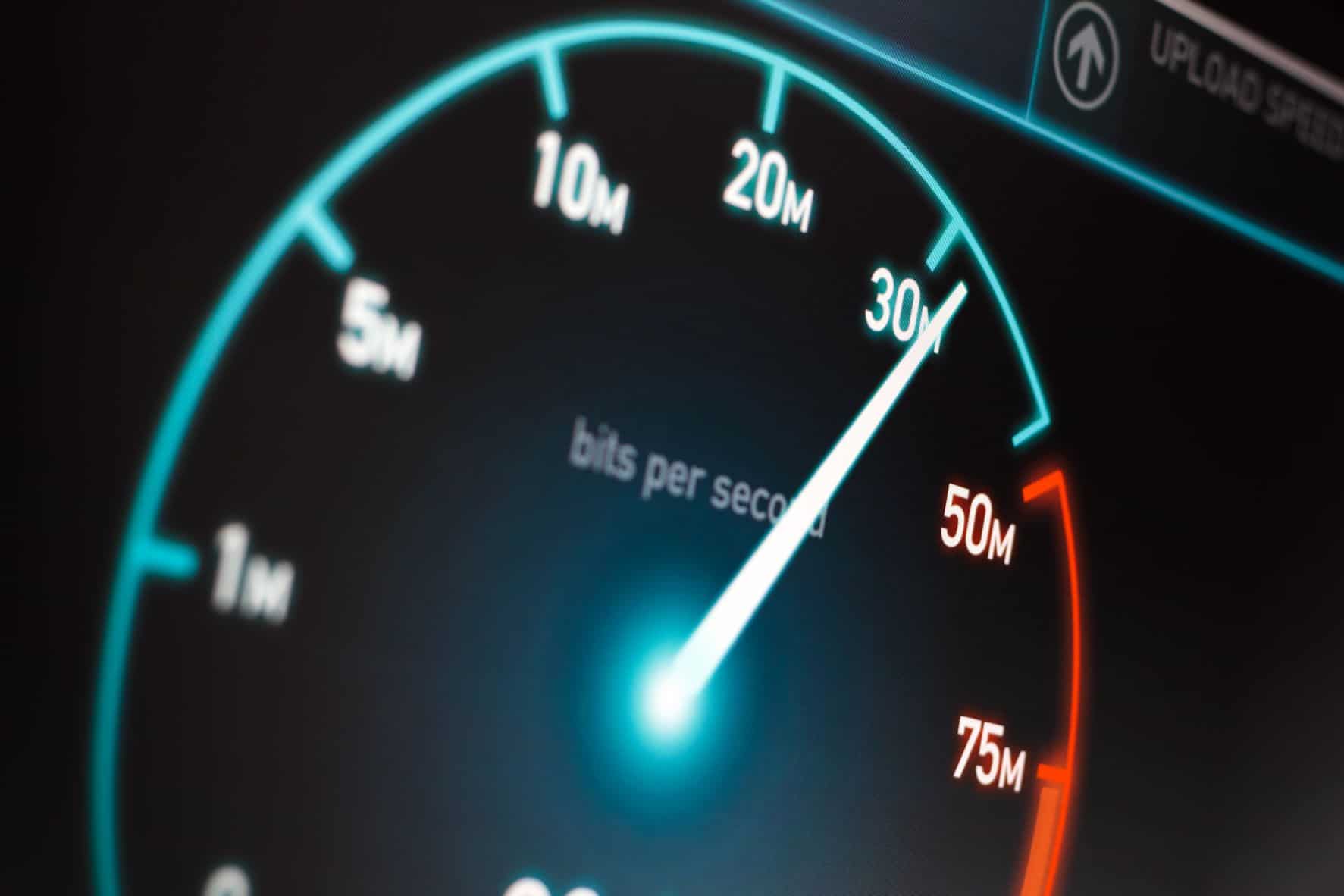The new lifeblood of the economy is data, and future economic growth will depend on our ability to transfer that data quickly. Fiber-optic cables and 5G wireless transmitters rank as high as oil pipelines in their importance to our way of life, and having a high-speed internet connection is essential.
We ranked the fastest internet providers based on data from more than 140 million internet speed tests conducted in the past 12 months.
About the report and our data:
- We analyzed 160 internet providers providing service across the United States where we had at least 1,000 independent speed tests to analyze from the past 12 months.
- The primary metric we used to rank providers was speed at the “90th percentile” of speed tests. Most providers offer plans at different speeds, and we believe this metric represents a good proxy for typical speeds for customers that purchase the fastest plans. (More on this topic below).
- Several of the largest internet providers in the U.S., including, scored in the top 10% of all internet service providers we looked at – including those providers that exclusively offer fiber.
- It’s also worth noting that 5G Home Internet providers like T-Mobile are also providing speeds greater than 100Mbps at the 90th percentile.
The Fastest National Providers
| 90th percentile (Mbps) | Maximum speed (Mbps) | Median (Mbps) | Est. population Covered | |
|---|---|---|---|---|
| AT&T | 495 | 5170.2 | 70 | 306,461,488 |
| Verizon | 536.3 | 7214.3 | 120 | 305,552,896 |
| T-Mobile | 184.7 | 4352.5 | 24.8 | 288,319,911 |
| Xfinity | 448.3 | 2543.9 | 114.2 | 111,927,145 |
| Spectrum | 321.7 | 2504.4 | 99.1 | 102,726,027 |
The Fastest Local and Regional Providers
All of the providers below had speeds above 150Mbps or higher at the 90th percentile and have a service area spanning between 200,000 and 40 million people. Stealth Communications, which is primarily a business internet provider, had the highest maximum speed recorded at an eye-popping 6,718 Mbps.
| 90th percentile (Mbps) | Maximum speed (Mbps) | Median (Mbps) | Est. population Covered | |
|---|---|---|---|---|
| Stealth Communications | 4017 | 6718 | 26 | 2110129 |
| Sonic | 926 | 6106 | 176 | 1696048 |
| US Signal Company | 573 | 1743 | 102 | 2013697 |
| Pilot | 559 | 5240 | 191 | 673979 |
| Google Fiber | 536 | 4102 | 157 | 2848858 |
| UTOPIA | 527 | 1227 | 91 | 371907 |
| SUMOFIBER | 511 | 985 | 140 | 680878 |
| VTel Wireless | 506 | 931 | 91 | 621795 |
| netBlazr | 501 | 928 | 188 | 543758 |
| Crown Castle Fiber | 489 | 5280 | 83 | 36626458 |
| Frontier Communications | 482 | 5708 | 93 | 33047632 |
| Astound Broadband Powered by Grande | 480 | 2650 | 112 | 1419741 |
| Ziply Fiber | 474 | 2147 | 77 | 1482362 |
| Ultimate Internet Access | 472 | 947 | 71 | 523958 |
| EPB | 470 | 4996 | 100 | 363786 |
| Cincinnati Bell | 438 | 3166 | 82 | 1518281 |
| Dakota Carrier Network | 437 | 825 | 95 | 395028 |
| ACD.net | 434 | 942 | 47 | 904073 |
| OSHEAN | 426 | 2544 | 77 | 966614 |
| Cox Communications | 423 | 5441 | 95 | 20941074 |
| Connext | 415 | 903 | 110 | 735956 |
| Metronet | 412 | 1508 | 87 | 5122649 |
| Astound Broadband Powered by Wave | 412 | 1922 | 93 | 2109144 |
| C Spire Fiber | 410 | 1215 | 38 | 1608230 |
| WOW! | 397 | 2298 | 95 | 7174627 |
| Suddenlink Communications | 394 | 1454 | 93 | 7020099 |
| FirstDigital Telecom | 384 | 936 | 88 | 726502 |
| Surf Broadband Solutions | 383 | 945 | 78 | 1038470 |
| Breezeline | 378 | 1030 | 100 | 1897822 |
| Mediacom Cable | 376 | 1578 | 90 | 6564176 |
| GVEC.net | 373 | 943 | 90 | 665876 |
| Everywhere Wireless | 361 | 916 | 103 | 3916796 |
| Viser | 359 | 920 | 47 | 381108 |
| Unite Private Networks | 351 | 1713 | 84 | 4638480 |
| Fidelity Communications | 348 | 1118 | 73 | 385492 |
| TPx Communications | 342 | 1549 | 49 | 638808 |
| GCI Communication | 340 | 848 | 49 | 559918 |
| Ptera | 336 | 924 | 14 | 614356 |
| Optimum by Altice | 335 | 5349 | 114 | 11941064 |
| NUVISIONS | 326 | 934 | 53 | 1591513 |
| TDS Telecom | 322 | 3086 | 75 | 2048611 |
| Single Digits | 319 | 936 | 63 | 362820 |
| Sparklight (formerly Cable One) | 306 | 1251 | 91 | 4292287 |
| Vast Networks | 304 | 2175 | 39 | 1962960 |
| Agile Networks | 302 | 688 | 24 | 5124661 |
| SenaWave | 302 | 940 | 92 | 455224 |
| Point Broadband | 302 | 2090 | 84 | 604099 |
| Armstrong | 295 | 2161 | 104 | 1063965 |
| Consolidated Communications (Formerly Fairpoint Communications) | 290 | 4305 | 40 | 4572375 |
| LOGIX Fiber Networks | 287 | 4196 | 93 | 358941 |
| Aerux Broadband | 277 | 946 | 86 | 1476008 |
| Net Vision Communications LLC | 276 | 902 | 45 | 726758 |
| Tekify Fiber & Wireless | 274 | 947 | 28 | 470364 |
| PenTeleData | 268 | 3003 | 84 | 2021477 |
| NexGen Communications | 263 | 774 | 55 | 428871 |
| Shentel | 252 | 3099 | 48 | 417577 |
| Towerstream | 238 | 897 | 201 | 1029908 |
| Cablelynx Broadband | 220 | 948 | 54 | 376970 |
| Northland Communications | 219 | 902 | 93 | 363894 |
| Hawaiian Telcom | 213 | 426 | 54 | 1282690 |
| Vyve Broadband | 213 | 2645 | 88 | 1295573 |
| Parker FiberNet | 211 | 1129 | 50 | 473196 |
| Buckeye Broadband | 201 | 1993 | 83 | 542329 |
| Amplex Internet | 199 | 930 | 18 | 445288 |
| Uniti Fiber | 193 | 946 | 67 | 660652 |
| OnlineNW | 192 | 940 | 13 | 505449 |
| Bresco Broadband | 180 | 1206 | 15 | 881416 |
| Windstream | 172 | 2938 | 27 | 12660437 |
| WiLine Networks | 166 | 941 | 38 | 2136190 |
| Cruzio Internet | 164 | 940 | 46 | 3024653 |
More on why we chose the 90th percentile:
First, the median speed unfairly favors certain providers depending on their customer base. Companies that offer internet packages at a variety of speeds, or leverage a variety of technologies, may have a lower median because a large number of customers may choose slower plans to match their budget. Providers that only offer one package, or that may only have commercial customers, will see a smaller impact on their median. The 90th percentile can also be affected by this, but it levels the playing field by focusing on customers who have bought high speed packages.
Second, the maximum observed speed is a poor indicator of the speeds people are actually experiencing – there is an extreme drop off in speeds below that. The following graph shows an example of this drop-off, where speeds are indicated on the X-axis and the Y-axis shows the percentage of customers experiencing that speed or higher.
While this provider had observed speeds as high as 780 Mbps, that represented just one person in over 3000, or the top 0.03% of speeds observed.
Advertised speed vs. actual speed
The actual internet speed delivered to your home is often lower than the speed advertised on your internet provider’s plan. This is due to a number of factors, many of which are internet-type specific.
For example, cable internet users often have to deal with slower speeds during peak hours, since bandwidth is shared with neighbors. This is especially true in the evening hours when many households have an increased volume of internet use.
DSL internet speeds often vary depending on the proximity of your home to the provider’s local office in your area. For fixed wireless users, household items such as microwaves or objects obstructing the clear line-of-sight to/from your antenna can give you slower speeds.
A satellite internet connection also requires a line-of-sight connection with the network. This can cause slower speeds for users living in areas with mountains and forests. The equipment is also susceptible to interference from poor weather conditions.
Fiber internet providers are often able to deliver speeds extremely close to advertised speeds.
What speed do I need?
In 2015, then FCC Chairman Tom Wheeler introduced the current definition of broadband internet, which is 25 Mbps download and 3 Mbps upload speed (often denoted as 25/3). That definition may change, however, because on July 15th 2022, current FCC Chairwoman Jessica Rosenworcel proposed increasing it to 100 Mbps down and 25 Mbps up (or 100/25), with an eye to going even higher in the future. In her proposal she stated, “The needs of internet users long ago surpassed the FCC’s 25/3 speed metric, especially during a global health pandemic that moved so much of life online […] The 25/3 metric isn’t just behind the times, it’s a harmful one because it masks the extent to which low-income neighborhoods and rural communities are being left behind and left offline.”
To get a better idea of exactly what speeds you need, you can refer to our bandwidth calculator that details the speeds required for a number of different activities.
Methodology
We queried M-Labs Network Diagnostic Tool (NDT) dataset for speed test data for 160 of the top internet providers in the US by estimated population covered. We analyzed over 140 million speed tests with over 1000 data points for each provider spanning a 12-month period.



